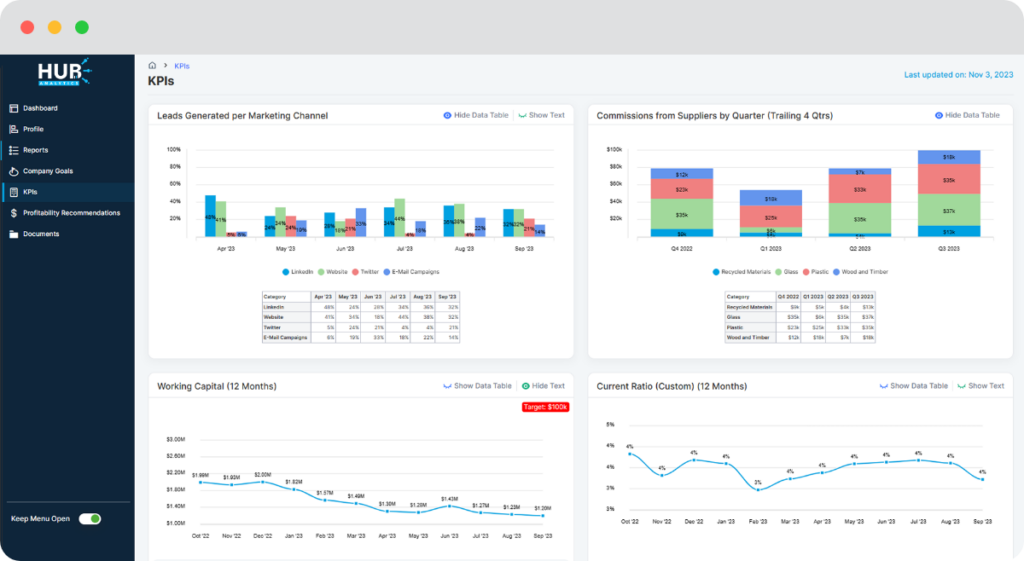This blog post delves into the significance of ecommerce metrics, highlighting their role in optimizing performance and fostering growth.
Metrics and Key Performance Indicators (KPIs) are quantifiable data points used to assess the performance of a business. In the realm of ecommerce, these metrics provide valuable insights into various aspects of online operations.
Ecommerce metrics encompass a range of parameters that evaluate the health and effectiveness of an online store. These metrics go beyond traditional sales figures, offering a nuanced perspective on customer behavior, marketing efficacy, and overall business performance.
The conversion rate is a critical metric, representing the percentage of website visitors who make a purchase. Monitoring and optimizing this metric provide insights into the effectiveness of your website’s design, user experience, and marketing strategies.
((Total Conversions / Total Visitors) * 100)
Average Order Value measures the average amount customers spend on each transaction. Increasing AOV is a powerful strategy for boosting revenue without necessarily acquiring more customers, making it a key metric for maximizing profitability.
(Total Revenue / Number of Orders)
Understanding the cost of acquiring a new customer is vital for budgeting and assessing the efficiency of marketing campaigns. Lowering CAC while maintaining customer acquisition effectiveness is a key objective for sustainable growth.
(Total Marketing Costs / Number of Customers Acquired)
CLV estimates the total revenue a business can expect from a single customer over their entire relationship. This long-term perspective is crucial for making strategic decisions that foster customer loyalty and retention.
(Average Purchase Value * Purchase Frequency * Customer Lifespan)
Cart abandonment occurs when a potential customer leaves the online shopping process before completing a purchase. A high abandonment rate signals potential issues in the checkout process or could be an opportunity to implement effective recovery strategies.
((Number of Abandoned Carts / Total Carts Created) * 100)

ROAS evaluates the profitability of advertising efforts by measuring the revenue generated in relation to the cost of the advertising campaign. This metric guides businesses in optimizing their advertising budget for maximum returns.
(Revenue from Ad Campaign / Cost of Ad Campaign)
Churn rate reflects the percentage of customers who stop purchasing from the store over a specific period. Lowering churn is essential for maintaining a steady customer base and reducing the need for constant customer acquisition efforts.
(Customers Lost / Total Customers at the Start of the Period) * 100)
Inventory turnover assesses how efficiently a business is selling its inventory. A high turnover rate indicates effective inventory management, preventing overstocking or stockouts and ensuring a healthy cash flow.
(Cost of Goods Sold (COGS) / Average Inventory)
Website traffic measures the number of visitors to your site, providing insights into your online presence and marketing effectiveness. Monitoring traffic trends helps businesses understand user behavior and refine their online strategies.
(Total Website Visits)

Bounce rate represents the percentage of visitors who navigate away from the site after viewing only one page. A high bounce rate may indicate issues with website content, usability, or relevance to visitor expectations.
((Number of Single-Page Sessions / Total Entrances) * 100)
CSAT measures customer satisfaction through feedback surveys. Understanding customer sentiment is crucial for identifying areas of improvement and maintaining a positive brand reputation.
((Number of Satisfied Customers / Total Customers Surveyed) * 100)
Email CTR assesses the effectiveness of email marketing campaigns by measuring the percentage of recipients who click on links within emails. A higher CTR indicates engaging content and can contribute to increased conversions.
((Total Email Clicks / Total Emails Sent) * 100)
Social media engagement quantifies the level of interaction with your brand on social platforms. Strong engagement fosters brand awareness, customer loyalty, and can drive traffic to your ecommerce site.
((Total Likes, Comments, Shares / Total Followers) * 100)
With the increasing use of mobile devices for online shopping, monitoring mobile conversion rates is crucial. Optimizing the mobile user experience can lead to higher conversion rates and increased revenue.
((Mobile Conversions / Mobile Visitors) * 100)
Tracking the abandoned checkout recovery rate helps businesses understand the success of efforts to bring back customers who left the purchasing process incomplete. Implementing effective recovery strategies can contribute to increased sales and customer retention.
((Number of Recovered Carts / Total Abandoned Carts) * 100)
Selecting the appropriate metrics for your ecommerce business requires a deep understanding of your goals and customer behavior. Tailor your focus based on the unique aspects of your online store.
Streamline your metric tracking with HUB, a comprehensive analytics platform designed to provide real-time insights into ecommerce performance. From conversion rates to customer satisfaction, HUB empowers businesses to make informed decisions and drive success.